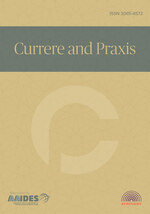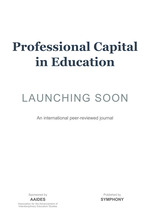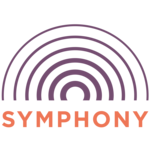Acting self-determinedly and critically in a post-digital future? A critical review on digitalisation in music education
DOI:
https://doi.org/10.70116/298027415Keywords:
Music education, digitalisation, technology, future-making, critical literature reviewAbstract
In this article, we will ask how music education can prepare learners for future-making in a post-digital world. Starting with a critical literature review we identify characteristic logics and central topics in the discourse on digitality in music education: the polarising argumentation in dichotomies, the tendencies of deterritorialization in post-digital practices, the focus on smart mobile technologies, the new awareness and changing role of things and musical instruments, and the strong interconnection to popular music (education), the upcoming discussion on creativity, artificial intelligence, hacking and sustainability, and the debate on the high demands on teachers, that are connected to the use and implementation of digital technologies in music education. On this basis we discuss the potentials and constraints that occur in music education due to the transformation to a post-digital world. Further, we discuss future steps for research and teacher education, and different practice contexts in the field of music education which help to enable learners to act in a self-determined way, and critically, in a post-digital future.
Downloads
References
Ahlers, M., & Godau, M. (2019). Digitalisierung – Musik – Unterricht: Rahmen, Theorien und Projekte. [Digitisation - music - teaching: Frameworks, theories and projects.] Diskussion Musikpädagogik, 82, 4–9.
Bell, A. P. (2015a). Can we afford these affordances? GarageBand and the double-edged sword of the digital audio workstation. Action, Criticism & Theory for Music Education, 14(1). Retrieved May 1, 2023 from http://act.maydaygroup.org/articles/Bell14_1.pdf
Bell, A. P. (2015b). DAW democracy? The dearth of diversity in ‘playing the studio’. Journal of Music, Technology and Education, 8(2), 129–146. https://doi.org/10.1386/jmte.8.2.129_1
Bell, A. P. (2018). Dawn of the DAW (Vol. 1). Oxford University Press. https://doi.org/10.1093/oso/9780190296605.001.0001
Benedict, C., & O’Leary, J. (2019). Reconceptualizing “Music Making:” Music Technology and Freedom in the Age of Neoliberalism. Action, Criticism, and Theory for Music Education, 18(1), 26–43. https://doi.org/10.22176/act18.1.26
Bettinger, P. (2019). Normativität und Bildung im Kontext der Postdigitalität. Ein begleitender Kommentar. [Normativity and education in the context of postdigitality. An accompanying commentary.] In K. Klein & W. Noll (Eds.), Postdigital Landscapes. Kunst und Medienbildung in der digital vernetzten Welt (pp. 134–138).
Borchert, J., Endres, A., Schmid, S., & Treß, J. (2022). Music is what people do in 2020 & beyond: Music practices between produsing, prosuming & the diversification of musical frames. In Proceedings of the EAS Conference Freiburg.
Brøvig-Hanssen, R., & Danielsen, A. (2016). Digital signatures: The impact of digitization on popular music sound. The MIT Press. https://doi.org/10.7551/mitpress/10192.001.0001
Brunner, G., & Treß, J. (2021). “Da ist so ein bisschen Aufbruchstimmung ...”: Einsichten zum Musikunterricht auf Distanz während der Corona-Pandemie. [“There's a bit of an atmosphere of departure ...”: Insights on teaching music at a distance during the Corona pandemic.] Diskussion Musikpädagogik, 92, 17–23.
Buchborn, T., Burnard, P., Hebert, D. G., & Moore, G. (2022). Reconfiguring music education for future-making: How? Music Education Research, 1–7. https://doi.org/10.1080/14613808.2022.2076821
Burnard, P. (2007). Reframing creativity and technology: Promoting pedagogic change in music education. Journal of Music, Technology and Education, 1(1), 37–55. https://doi.org/10.1386/jmte.1.1.37_1
Burnard, P. (2009). Creativity and technology: Critical agents of change in the work and lives of music teachers. In J. Finney & P. Burnard (Eds.), Music education with digital technology (pp. 196–206). Continuum International Publishing Group.
Camlin, D. A., & Lisboa, T. (2021). The digital ‘turn’ in music education (editorial). Music Education Research, 23(2), 129–138. https://doi.org/10.1080/14613808.2021.1908792
Campreguer França, N., Smit, D., Wuschitz, S., & Fuchsberger, V. (2021). The women* Who made it: Experiences from being a woman* at a maker festival. Sustainability, 13(16), 9361. https://doi.org/10.3390/su13169361
Clements, A. (2018). A postdigital future for music education: Definitions, implications, and questions. Action, Criticism, and Theory for Music Education, 17(1), 48–80. https://doi.org/10.22176/act17.1.48
Collins, N. (2020). Handmade electronic music: The art of hardware hacking. Taylor & Francis Group. Retrieved April 9, 2023 from https://ebookcentral.proquest.com/lib/gbv/detail.action?docID=6215685
Cramer, F. (2015). What Is ‘post-digital’? In D. M. Berry & M. Dieter (Eds.), Postdigital Aesthetics (pp. 12–26). Palgrave Macmillan UK. https://doi.org/10.1057/9781137437204_2
Duve, J. (2022). Praktiken des Komponierens mit Loops und Samples. [Practices of composing with loops and samples.] https://doi.org/10.17877/DE290R-22767
Eickelmann, B, Drossel, & K. (2020). Schule auf Distanz. Perspektiven und Empfehlungen für den neuen schulalltag. Eine repräsentative Befragung von Lehrkräften in Deutschland. [School at a distance. Perspectives and recommendations for the new everyday school life. A representative survey of teachers in Germany.] Retrieved April 14, 2023 from https://www.vodafone-stiftung.de/umfrage-coronakrise-lehrer/
Espeland, M. (2010). Dichotomies in music education – real or unreal? Music Education Research, 12(2), 129–139. https://doi.org/10.1080/14613808.2010.481823
Eusterbrock, L. (2023). Mobile safe spaces and preset emotions: Making music with apps as a digital technology of the self. Popular Music and Society, 1–20. https://doi.org/10.1080/03007766.2022.2155029
Eusterbrock, L., Godau, M., Haenisch, M., & Rolle, C. (2021). Spielwiese und Spielzeug: Ludische Qualitäten ästhetischer Erfahrung in der Appmusikpraxis. [Playground and Toys: Ludic Qualities of Aesthetic Experience in App Music Practice.] In V. Krupp, A. Niessen, & V. Weidner (Eds.), Wege und Perspektiven in der musikpädagogischen Forschung (pp. 199–216). Waxmann.
Förster, A. (2022). Digitale Musikinstrumente im sonderpädagogischen Kontext. Eine explorative Erhebung mit Musiklehrer*innen an Schulen mit sonderpädagogischem Förderschwerpunkt. [Digital music instruments in a special education context. An explorative survey with music teachers at schools with special educational needs.] In M. Göllner, J. Knigge, A. Niessen, & V. Weidner (Eds.), 43. Jahresband des Arbeitskreises Musikpädagogische Forschung =: 43rd yearbook of the German Association for Research in Music Education (Vol. 43, pp. 61–78). Waxmann.
Frid, E. (2019). Accessible digital musical instruments—A review of musical interfaces in inclusive music practice. Multimodal Technologies and Interaction, 3(3), 57. https://doi.org/10.3390/mti3030057
Gall, M. (2017). Technology in music education in England and across Europe. In S. A. Ruthmann & R. Mantie (Eds.), The Oxford handbook of technology and music education (pp. 30–48). Oxford University Press.
Godau, M. (2018). Inklusion und Appmusik: Wie die Integration von Apps in den inklusiven Musikunterricht gelingen kann. [Inclusion and app music: How the integration of apps into inclusive music lessons can succeed.] In A. Bossen & B. Jank (Eds.), Musikarbeit im Kontext von Inklusion und Integration (pp. 97–120). Universität Potsdam and Universitätsverlag Potsdam.
Godau, M. (2022a). Hacking Music Education Über das Potenzial einer Kulturtechnik des Digitalzeitalters für musikpädagogisches Denken und Handeln. [Hacking music education on the potential of a cultural technique of the digital age for music pedagogical thinking and action.] Üben & Musizieren, 2, 52.
Godau, M. (2022b). Touch-Screen-Music. Eine postphänomenologische Perspektive auf ästhetische Lern- und Bildungspraxis mit Musikapps auf Smarttechnologien. [Touch-screen music. A postphenomenological perspective on aesthetic learning and educational practice with music apps on smart technologies.] In M. Ahlers, B. Jörissen, M. Donner, & C. Wernicke (Eds.), MusikmachDinge im Kontext. Forschungszugänge zur Soziomaterialität von Musiktechnologie (pp. 89–121). Universitätsverlag Hildesheim. Retrieved April 11, 2023 from https://hildok.bsz-bw.de/frontdoor/index/index/docId/1366
Godau, M., Eusterbrock, L., Haenisch, M., Hasselhorn, J., Knigge, J., Krebs, M., Rolle, C., Stenzel, M., & Weidner, V. (2019). MuBiTec: Musikalische Bildung mit mobilen Digitaltechnologien. [MuBiTec: Musical education with mobile digital technologies.] In B. Jörissen, S. Kröner, & L. Unterberg (Eds.), Forschung zur Digitalisierung in der Kulturellen Bildung (pp. 129–148). Kopaed.
Godau, M., & Haenisch, M. (2019). How popular musicians learn in the postdigital age. Ergebnisse einer Studie zur Soziomaterialität des Songwritings von Bands in informellen Kontexten. [How popular musicians learn in the postdigital age. Results of a study on the sociomateriality of songwriting by bands in informal contexts.] Waxmann. https://doi.org/10.25656/01:20704
Hein, E. (2017). The promise and pitfalls of the digital studio. In S. A. Ruthmann & R. Mantie (Eds.), The Oxford handbook of technology and music education (pp. 618–632). Oxford University Press. https://doi.org/10.1093/oxfordhb/9780199372133.013.22
Himonides, E. (2017). Educators’ roles and professional development. In S. A. Ruthmann & R. Mantie (Eds.), The Oxford Handbook of Technology and Music Education (pp. 618–632). Oxford University Press. https://doi.org/10.1093/oxfordhb/9780199372133.013.59
Hopkins, E., & Berkers, P. (2019). Engineering a place for women: Gendered experiences of the music technology classroom. In S. Raine & C. Strong (Eds.), Towards gender equality in the music industry: Education, practice and strategies for change (pp. 45–58). Bloomsbury Academic. https://doi.org/10.5040/9781501345531
Hughes, J. M., & Kumpulainen, K. (2021). Editorial: Maker education: Opportunities and challenges. Frontiers in Education, 6, 798094. https://doi.org/10.3389/feduc.2021.798094
Ismaiel-Wendt, J. (2016). Post_presets: Kultur, Wissen und populäre MusikmachDinge. Universitätsverlag Hildesheim and Georg Olms Verlag. Retrieved April 14, 2023 from https://hildok.bsz-bw.de/frontdoor/index/index/year/2016/docId/581
Jensenius, A. R., & Lyons, M. J. (2017). A NIME Reader: Fifteen Years of New Interfaces for Musical Expression: Vol. v.3. Springer International Publishing AG.
Jörissen, B., Ahlers, M., Donner, M., & Wernicke, C. (2019). MIDAKuK: Musikalische Interface-Designs: Augmentierte Kreativität und Konnektivität. [MIDAKuK: Musical interface designs: Augmented creativity and connectivity.] In B. Jörissen, S. Kröner, & L. Unterberg (Eds.), Forschung zur Digitalisierung in der Kulturellen Bildung (pp. 109–127). Kopaed.
Kattenbeck, C. (2022). Beats. Bauen. Lernen. – Manifestation, Konstitution und Entwicklung künstlerischer Handlungsfähigkeit beim Beatmaking. [Beats. Making. Learning. – Manifestation, constitution and development of artistic agency in beatmaking.] Waxmann Verlag GmbH. https://doi.org/10.31244/9783830995869
Kultusministerkonferenz (2017). Bildung in der digitalen Welt. Strategie der Kultusministerkonferenz [Education in the Digital World. Conference of Ministers of Education and Cultural Affairs’ strategy]. Beschluss der KMK vom 08.12.2016 i.d.F. vom 07.12.2017 [Resolution of the Conference of Ministers of Education and Cultural Affairs of 08.12.2016 as amended on 07.12.2017]. Retrieved April 20, 2023 from https://www.kmk.org/fileadmin/Dateien/veroeffentlichungen_beschluesse/2016/2016_12_08-Bildung-in-der-digitalen-Welt.pdf
Kultusministerkonferenz (2018). Demokratie als Ziel, Gegenstand und Praxis historisch-politischer Bildung und Erziehung in der Schule [Democracy as a goal, content, and practice of historical-political education in school]. Beschluss der Kultusministerkonferenz vom 06.03.2009 i. d. F. vom 11.10.2018 [Resolution of the Conference of Ministers of Education and Cultural Affairs of 06.03.2009 as amended on 11.10.2018]. Retrieved April 20, 2023 from https://www.kmk.org/fileadmin/Dateien/veroeffentlichungen_beschluesse/2009/2009_03_06-Staerkung_Demokratieerziehung.pdf
Kultusministerkonferenz (2021). Lehren und lernen in der digitalen welt. Ergänzung zur Strategie der Kultusministerkonferenz, Bildung in der digitalen Welt [Teaching and learning in the digital world. Supplement to the Conference of Ministers of Education and Cultural Affairs' strategy “Education in the Digital World”]. Beschluss der Kultusministerkonferenz vom 09.12.2021 [Resolution of the Conference of Ministers of Education and Cultural Affairs of 06.03.2009]. Retrieved April 21, 2023 from https://www.kmk.org/fileadmin/veroeffentlichungen_beschluesse/2021/2021_12_09-Lehren-und-Lernen-Digi.pdf
Landy, L. (2012). Making music with sounds. Routledge.
Lehmann-Wermser, A., Weyel, B., Breiter, A., Krieter, P., & Viertel, M. (2022). Selbstregulierte lernpraxen beim digitalen musiklernen. Ergebnisse aus einer multimethodischen untersuchung. [Self-regulated learning practices in digital music learning. Results from a multi-method study.] In M. Ahlers, B. Jörissen, M. Donner, & C. Wernicke (Eds.), MusikmachDinge im Kontext. Forschungszugänge zur Soziomaterialität von Musiktechnologie. Universitätsverlag Hildesheim. Retrieved April 16, 2023 from https://hildok.bsz-bw.de/frontdoor/index/index/docId/1366
Mirando, E. R., & Wanderley, M. M. (2006). New digital musical instruments: Control and interactions beyond the keyboard: Vol. v.DAS21. A-R Editions Inc. Retrieved April 11, 2023 from http://gbv.eblib.com/patron/FullRecord.aspx?p=3115109
Mußmann, F., Hardwig, T., Riethmüller, M., & Klötzer, S. (2021). Digitalisierung im Schulsystem 2021. [Digitisation in the school system 2021.] Kooperationsstelle Hochschulen und Gewerkschaften der Georg-August-Universität Göttingen. https://doi.org/10.3249/UGOE-PUBL-10
Niediek, I., & Gerland, J. (2022). Bildungspotenziale digitaler Musiziermedien im inklusionsorientierten musikunterricht. [Educational potentials of digital music making media in inclusive music teaching.] Medienimpulse, 60(2), 26 Seiten. https://doi.org/10.21243/MI-02-22-18
Pessoa, M., Parauta, C., Luís, P., Corintha, I., & Bernardes, G. (2020). Examining temporal trends and design goals of digital music instruments for education in NIME: A proposed taxonomy. Proceedings of the International Conference on New Interfaces for Musical Expression, 591–595. https://doi.org/10.5281/ZENODO.4813210
Pierard, T., & Lines, D. (2022). A constructivist approach to music education with DAWs. Teachers and Curriculum, 22(2), 135–145. https://doi.org/10.15663/tandc.v22i2.406
Sachsse, M. (2021). Informelles lernen mit digitalen Medien zwischen Gegenbild, Abbild und Utopie. [Informal learning with digital media between counter-image, image and utopia.] In G. Brunner, C. Lietzmann, S. Schmid, & J. Treß (Eds.), Mastery & Mystery (pp. 317–330). Helbling.
Selwyn, N. (2021). Ed-tech within limits: Anticipating educational technology in times of environmental crisis. E-Learning and Digital Media, 18(5), 496–510. https://doi.org/10.1177/20427530211022951
Shang, M. (2019). The application of artificial intelligence in music education. In D.-S. Huang, K.-H. Jo, & Z.-K. Huang (Eds.), Intelligent Computing Theories and Application (Vol. 11644, pp. 662–668). Springer International Publishing. https://doi.org/10.1007/978-3-030-26969-2_62
Simon, V. (2020). Guided by delight: Music apps and the politics of user interface design in the iOS Platform. Television & New Media, 21(1), 60–74. https://doi.org/10.1177/1527476418794634
Spieker, B. (2020). Towards a sustainable, student-centred approach for technology-supported music education: A Dutch perspective. Journal of Music, Technology and Education, 13(2), 263–286. https://doi.org/10.1386/jmte_00026_1
Stalder, F. (2016). Kultur der Digitalität [Culture of digitality]. Suhrkamp.
Therapontos, N. (2013). Evolving music education in the digital age: sound–based music in public schools of Cyprus. Retrieved April 3, 2023 from http://hdl.handle.net/2086/11609
Till, R. (2017). A step into the light. In G. D. Smith, Z. Moir, M. Brennan, S. Rambarran, & P. Kirkman (Eds.), The Routledge research companion to popular music education (pp. 14–29). Routledge, Taylor & Francis Group.
Turchet, L., Antoniazzi, F., Viola, F., Giunchiglia, F., & Fazekas, G. (2020). The internet of musical things ontology. Journal of Web Semantics, 60, 100548. https://doi.org/10.1016/j.websem.2020.100548
Waldron, J. (2013a). User-generated content, YouTube and participatory culture on the Web: Music learning and teaching in two contrasting online communities. Music Education Research, 15(3), 257–274. https://doi.org/10.1080/14613808.2013.772131
Waldron, J. (2013b). YouTube, fanvids, forums, vlogs and blogs: Informal music learning in a convergent on- and offline music community. International Journal of Music Education, 31(1), 91–105. https://doi.org/10.1177/0255761411434861
Weyel, B., & Lehmann-Wermser, A. (2020). Lernprozesse von Musik in digitalen Lernumgebungen verstehen: Ein Forschungsprojekt von Forschenden aus Musikpädagogik und Informatik. [Understanding music learning processes in digital learning environments: A research project by researchers from music education and computer science.] In E. Pürgstaller, S. Konietzko, & N. Neuber (Eds.), Kulturelle Bildungsforschung (Vol. 24, pp. 55–70). Springer Fachmedien Wiesbaden. https://doi.org/10.1007/978-3-658-30602-1_5
Yu, X., Ma, N., Zheng, L., Wang, L., & Wang, K. (2023). Developments and applications of artificial intelligence in music education. Technologies, 11(2), 42. https://doi.org/10.3390/technologies11020042
Downloads
Published
How to Cite
Issue
Section
License
Copyright (c) 2023 Symphony

This work is licensed under a Creative Commons Attribution 4.0 International License.














